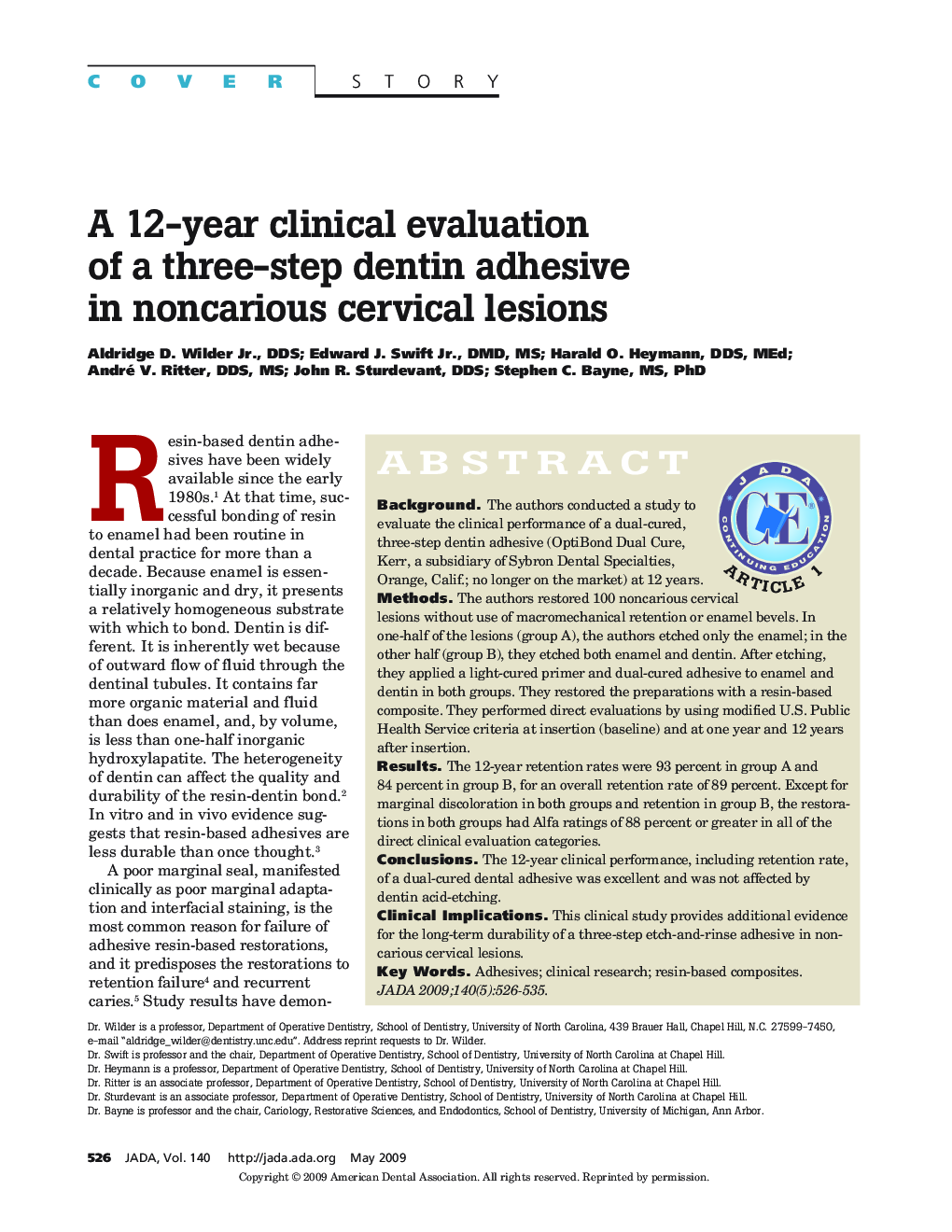| Article ID | Journal | Published Year | Pages | File Type |
|---|---|---|---|---|
| 3138856 | The Journal of the American Dental Association | 2009 | 10 Pages |
ABSTRACT BackgroundThe authors conducted a study to evaluate the clinical performance of a dual-cured, three-step dentin adhesive (OptiBond Dual Cure, Kerr, a subsidiary of Sybron Dental Specialties, Orange, Calif.; no longer on the market) at 12 years.MethodsThe authors restored 100 noncarious cervical lesions without use of macromechanical retention or enamel bevels. In one-half of the lesions (group A), the authors etched only the enamel; in the other half (group B), they etched both enamel and dentin. After etching, they applied a light-cured primer and dual-cured adhesive to enamel and dentin in both groups. They restored the preparations with a resin-based composite. They performed direct evaluations by using modified U.S. Public Health Service criteria at insertion (baseline) and at one year and 12 years after insertion.ResultsThe 12-year retention rates were 93 percent in group A and 84 percent in group B, for an overall retention rate of 89 percent. Except for marginal discoloration in both groups and retention in group B, the restorations in both groups had Alfa ratings of 88 percent or greater in all of the direct clinical evaluation categories.ConclusionsThe 12-year clinical performance, including retention rate, of a dual-cured dental adhesive was excellent and was not affected by dentin acid-etching.Clinical ImplicationsThis clinical study provides additional evidence for the long-term durability of a three-step etch-and-rinse adhesive in non-carious cervical lesions.
